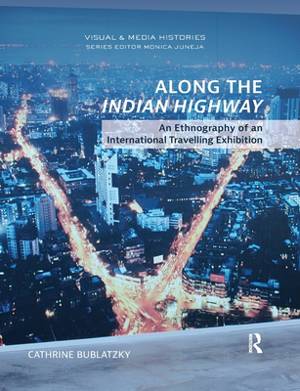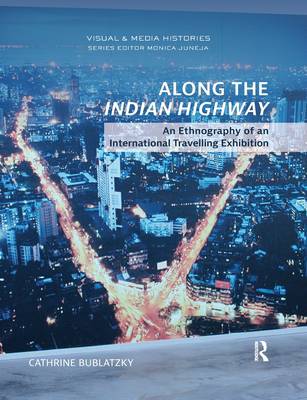
- Retrait gratuit dans votre magasin Club
- 7.000.000 titres dans notre catalogue
- Payer en toute sécurité
- Toujours un magasin près de chez vous
- Retrait gratuit dans votre magasin Club
- 7.000.0000 titres dans notre catalogue
- Payer en toute sécurité
- Toujours un magasin près de chez vous
Along the Indian Highway
An Ethnography of an International Travelling Exhibition
Cathrine BublatzkyDescription
This book is an ethnographic study of the travelling art exhibition Indian Highway that presented Indian contemporary art in Europe and China between 2008 and 2012, a significant period for the art world that saw the rise and fall of the national exhibition format. It analyses art exhibition as a mobile "object" and promotes the idea of art as a transcultural product by using participant observation, in-depth interviews, and multi-media studies as research method. This work encompasses voices of curators, artists, audiences, and art critics spread over different cities, sites, and art institutions to bridge the distance between Europe and India based on vignettes along the Indian Highway. The discussion in the book focuses on power relations, the contested politics of representation, and dissonances and processes of negotiation in the field of global art. It also argues for rethinking analytical categories in anthropology to identify the social role of contemporary art practices in different cultural contexts and also examines urban art and the way national or cultural values are reinterpreted in response to ideas of difference and pluralism.
Rich in empirical data, this book will be useful to scholars and researchers of modern and contemporary art, Indian art, art and visual culture, anthropology, art history, mobility, and transcultural studies.
Spécifications
Parties prenantes
- Auteur(s) :
- Editeur:
Contenu
- Nombre de pages :
- 194
- Langue:
- Anglais
- Collection :
Caractéristiques
- EAN:
- 9780367785048
- Date de parution :
- 31-03-21
- Format:
- Livre broché
- Format numérique:
- Trade paperback (VS)
- Dimensions :
- 189 mm x 246 mm
- Poids :
- 403 g

Les avis
Nous publions uniquement les avis qui respectent les conditions requises. Consultez nos conditions pour les avis.






